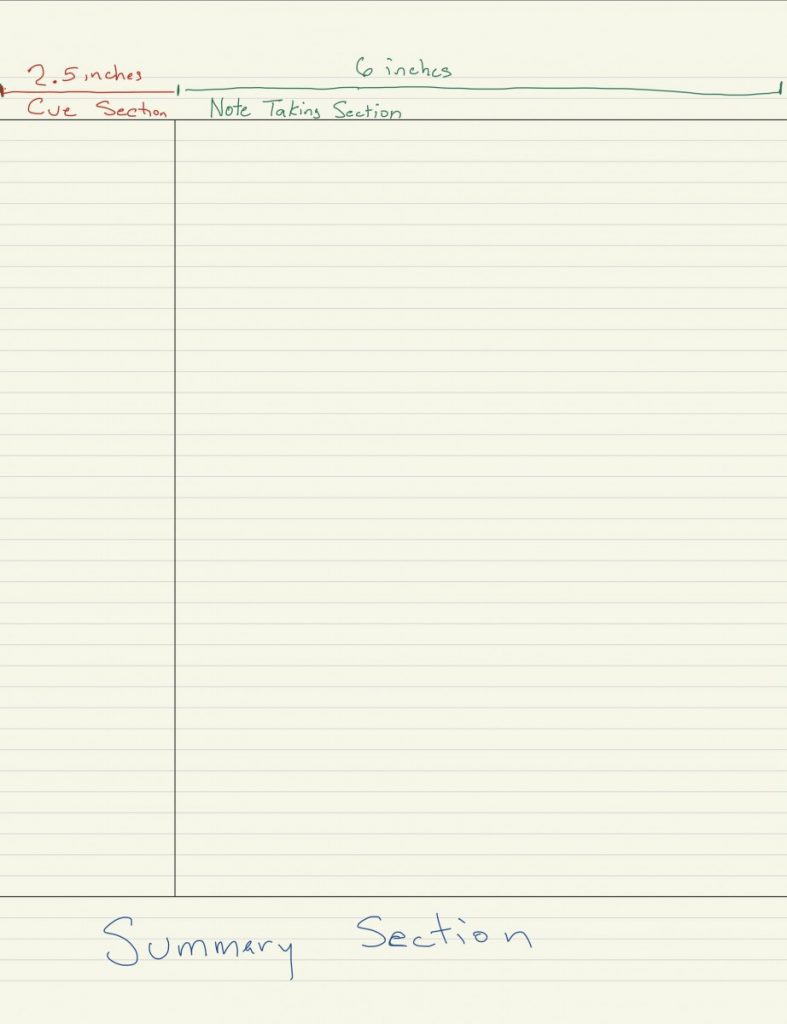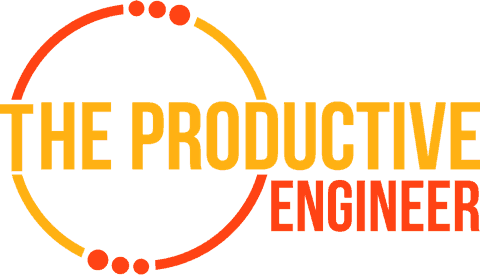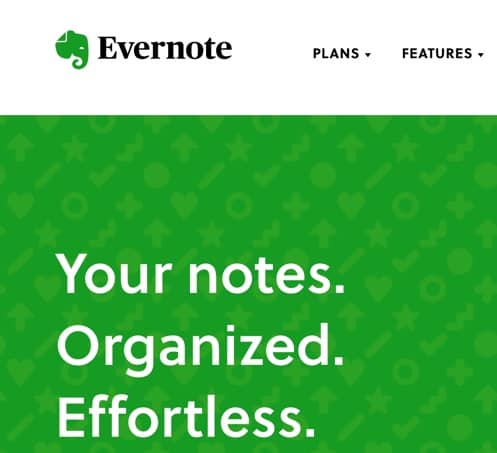How to use the Cornell Note Taking Method
When I went back to school, I found myself thinking about what is the best way to take notes that would both help me learn the material and to prepare for the exam. The one note-taking system that really helped me accomplish both of these objectives is the Cornell note-taking method. The Cornell note-taking method is a system proven to help people study and retain information. It is more than just a way to take notes but rather a whole system that guides you to write organized notes and teaches you how to study those notes and solidify your new knowledge of the topic.
This blog post will cover the Cornell note-taking method and how to use the method to learn effectively. The five steps of the Cornell note-taking method are the following:
| Step | Description |
| Record | This is the note-taking part. |
| Questions | Once you have completed the Record process, you will create questions out of the notes you have taken. |
| Recite | Reviewing your questions as though they were on your exam, testing yourself to ensure you understand the content. |
| Reflect | Read through your notes and questions and ask: How does this relate to what I have already learned? What is the significance of this information? |
| Review | Spend a little time each day reviewing all the notes you had taken previously to keep it fresh in your mind. |
Before we get started, if you are looking for more study tips to improve your academic performance, check out our article on the 25 best tips for improving your studying at the link below:
25 Tips to Improve Your Studying
Before we get started, if you are looking to improve your writing, you should really check out Grammarly. Grammarly is a godsend for those who have to write term papers, dissertations, or anything else you write that needs to be grammatically correct. Grammarly doesn’t just check grammar either. It helps you to write clearly and effectively by checking for overused words and unclear phrases. Best of all, Grammarly has a great free tier to get started with. For more information on Grammarly, click the link below:
Grammarly – Great Writing, Simplified
The Cornell note-taking method was created by Cornell University professor Walter Pauk in the 1950s and adopted by Cornell University as the Cornell Note-taking System (Source).
There are two phases to this system: using the Cornell Format to organize your notes and following the Cornell Way to engage with and study your written notes.

The Cornell Format is created by dividing your paper into three sections like an upside-down “T” where you have two columns on the first 2/3s of the page and one full-width column on the bottom. The smaller column on the left is the cue column and is supposed to be 2.5 inches. The column on the right is 6 inches wide and is the note-taking column. And the section at the bottom is the summary section.

The Note-taking column on the right is the largest and is where you write your notes as you are listening to a lecture, reading a book, or watching a video. You should be writing in short, concise sentences of about five words or less; this helps you write quickly while also capturing the most important part of the idea.

The Cue column on the left is to be used as soon after taking your notes as possible. This is where you write questions, keywords, and main ideas based on the notes you wrote. Filling in the Cue column helps correlate and solidify the information you just read or listened to.

Lastly is the Summary column at the bottom is where you summarize your notes at the end. This is used for later review and quick searches through your notebook, so here you want to briefly highlight the overall concept of the page to make it easy to scan and know what the main idea is here.
Why is the Cornell Note-taking method effective?
This method is extremely effective because it teaches the listener or reader to actively engage with the material as it is presented, how to effectively organize and actively review notes, and requires a reflection period to think deeply about the material shortly after the initial note-taking.

From step one, this method is designed to make you a successful learner. By actively listening to pick out key parts of the lecture and capturing it to a telegraphic sentence, five or fewer words, we are already truly engaging with the material, thus really learning as its being presented.
Organizing your notes this way is also a great advantage since you have to go back and engage with your personal notes to formulate cues, questions, and keywords for later recall. This helps you tie the big picture idea to practice exam questions and conversational understanding of the subject. And being able to scan the page and read the summary quickly allows you to review and become familiar with the whole overall picture of a long class or book or find certain information quickly.

The Reflection part of this method is one of the key factors to not only understanding the material but to relating with it on a personal level. This is where learning becomes knowing, now you can recall this knowledge and apply it to an exam or even more, an intellectual conversation about it. Hallelujah!
Now, the Review is a piece of cake. Spending ten minutes a week to review basically make sure you are continuously gaining an understanding and building on your notes and your own understanding of the concept.
A Detailed Review of the Cornell Note-taking Method
Let’s review each step of the process at a deeper level to see how we can apply it to our note-taking process.
Record

The first step of the process is to literally write down notes. This is what we do in the Record phase of the Cornell note-taking method. There are a couple of key things you really need to focus on in this phase:
- Use telegraphic sentences
- Put the notes in your own words
Telegraphic Sentences
Telegraphic sentences is a fancy way of saying keep your notes short and simple to understand. Try to keep one idea per sentence and write as succinctly as possible. This will be helpful when you review the notes later to ensure you both captured the idea or concept accurately and that you understand it.
Put the Notes in your own Words
Don’t just mindlessly scribble down whatever the professor is saying verbatim. You need to actively engage your mind while you’re writing. Remember that the goal is understanding the idea or concept, not to have a perfect transcript of what the professor said.
Questions

For me, this is the most powerful aspect of the Cornell note-taking method. Creating your own questions based on your notes forces your mind to engage with the content at an analytical level. If there is one piece of advice I could give on doing this is the following:
Make your questions as soon after taking the Record phase as possible.
The longer you wait to make your questions, the harder it will be and the longer it will take. When you make your questions right after the Record phase, all of the knowledge and context is still in your short-term memory. Waiting only makes the process harder so, if possible, make your questions right after class.
There are several key benefits to creating questions out of your notes:
| Benefit | Description |
| Clarifies Meaning | Creating your own questions helps you to fully understand the information. |
| Reveals Relationships | Creating questions puts your mind in an inquisitive mode that helps it to look for and find how various pieces of data relate to each other. This increases understanding. |
| Establishes Continuity | Similar to revealing relationships, creating questions helps to establish continuity in the information you are trying to learn. |
| Strengthens Memory | Because you are actively engaging your mind to process the information to create questions, you are actually strengthening your memory on the information as you are engaging with it in a different way. |
| Turbo-charges study time | Having a bunch of questions defined by you can really simplify the studying process. You essentially have a detailed practice exam ready to go! It is also likely that your questions will be harder than what is on the exam! |
Recite
The Recite phase is the “testing” phase of the process. Think of this process as taking a practice exam based on your notes. To perform the recite phase of the Cornell note-taking method, do the following:
- Cover the note-taking column containing your notes such that only your questions are viewable on the page
- Read the question and speak aloud your answer to the question

This testing process allows you to vocalize your answers in a way that forces you to create a mental model of what the question is asking and to conceptualize the answer. Doing this repeatedly will implant the concept in your mind.
You can use active recall as well. For more information on active recall, check out our Active Recall Guide.
Reflect
The Reflection phase is really about asking about how is the idea or information that you have in your notes is important or significant. You really are probing your mind looking for deeper relationships and how this piece of information fits in the bigger picture of the topic you are learning. The refection phase is where mastery of the topic occurs as you force your mind to go deeper.
Review

I like to think of the Review phase as rinse and repeat. Here you are taking a little bit of time every day (10-20 minutes) to review your notes and ask yourself the questions you had created. Repetition is the mother of skill. Engaging with the content every day, even for short intervals, will strengthen your comprehension and retention of the information.
Getting Started
Before you can start you need to format your page according to the Cornell Format. Then, step one, Record.
Recording can take some time to get used to if you aren’t a big note-taker or haven’t tried this type of note-taking before. The whole point to the Recording step is to take what you hear or read and pair it down to a 5 word or less sentence. Taking out the very core of what was said, the important part and just writing that part down. Think along the lines of Who? Where? What? When? Why? and How? Doing this will help you with the next step.
Questions ASAP; this is the step that lets you know if you took good notes. Based on your notes, formulate questions and write them down on the left column. If you took good notes, your questions will write themselves; these questions should be exam-type questions. Again, think who? What? When? Where? When? Why? This stage sets you up for easy study later.
Recite, this is basically a quick self-quiz. Answering the questions you formulated, out loud helps solidify the core concepts you learned and almost requiring you to have a conversation with yourself cleverly roles you right into Reflecting on the subject.
Reflect! I’ll say again, this is the KEY to converting your knowledge to an understanding of the subject. This step poses amazing deep questions for you to explore by yourself and then if you are a nerd like me, google all the way down the rabbit hole. Reflecting on the material engages you with the concept and grows your depth of relationship with it. If you are taking notes on a semester-long class or a chapter-book then you will do this several times over the course of the material and it will allow you to follow the thought process of the creator. Allowing you to have a virtual conversation with the creator of the material and continue to grow on top of their knowledge; formulating your own conclusions and questions for further exploration and dare I say, optional research.
Review. This is the final step to the system and now, the easiest. You have already become so familiar with the concepts of the material you can read your summary for each page of notes and confidently recall the material on the page from your working knowledge. That is not to say it can be skipped. Going back may also reveal some connections that you have not previously realize. Being able to understand how the different topics of a subject intertwine to make the whole picture creates an even deeper understanding and allows for better “what if” questions.
Advantages of the Cornell Note Taking System.
We have already gone through a plethora of advantages for using this system but there really are too many advantages to list. My personal most important advantages of this system are the guided tour on how to convert what I learn to a knowledge of the topic, learning to stay actively focused on the subject at hand, and easy review of the material I invested time in learning.

If I am researching anything, by the time I have done the reading, listening or watching the content, I at least want to have the type of understanding that will allow me to have a conversation about it, answer basic questions pertaining to the material, and dig deeper if I want. Sometimes we just need working knowledge of a topic, enough to get by, make educated stances and pose intellectual questions. This method at the very minimum allows for that.
Secondly, like everyone, sometimes I have a hard time staying focused. The Cornell System is about learning to focus and organize your thought onto paper. Picking out the key info and elaborating later.
Lastly, being able to review the material later and understand what is going on is extremely helpful. Either for quick review or to build on for deeper research having a polished notebook to glance through is sweet.

If you are a student, exam prep is half over; No more searching through the book or having to hand-write flash cards. The review manual is already written for you, by you. Not to mention selling those notes to next semesters students to recoup some of that…*eyeroll* textbook money.
If you have bigger ambitions like a term paper, dissertation, or book, this “review manual” makes up the bones of the whole subject or chapter. These notes will be your jumping-off point all the way through to your complete idea.
Versatility
It’s true that there are pretty explicit directions to the Cornell Note-taking Method and The Cornell Way but the range of information gathering, and information recollection of this system is hardly rivaled.
You can apply this method to anything from Comp 101 and use it as directed or to Art basics and have the note-taking side full of little doodles showing specific types of shading. As I have already said, some of the steps will take practice before you get the hang of them. And you may need to adapt a little depending on what you are trying to learn and in which media form it is presented. But no doubt, using this system will be hugely beneficial as you study forward.
Want More Tips and Tricks? Subscribe to our Newsletter!
If you haven’t already subscribed, please subscribe to The Productive Engineer newsletter. It is filled with tips and tricks on how to get the most out of the productivity apps you use every day. We hate spam as much as you do and promise only to send you stuff we think will help you get things done.
Check Out Our YouTube Channel!
We have a YouTube channel now and we are working hard to fill it with tips, tricks, how-tos, and tutorials. Click the link below to check it out!
Check out our Resources page
Check out our resources page for the products and services we use every day to get things done or make our lives a little easier at the link below:







